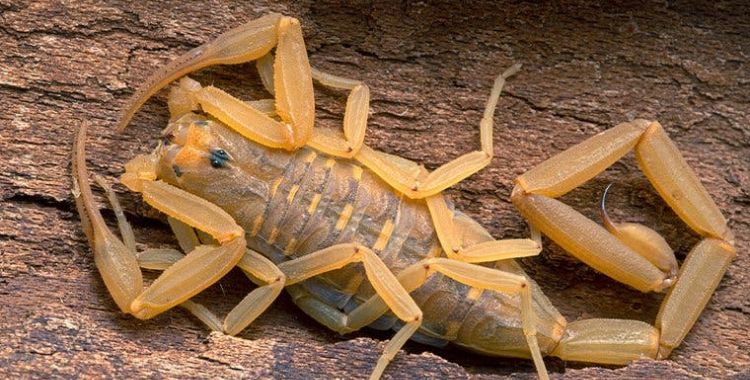
Dealing with Arizona Bark Scorpions
Dealing with Arizona Bark Scorpions
The Arizona bark scorpion is 1-3 inches in length and is a pale yellow color. Very common in the Foothills, Marana, and Oro Valley, the bark scorpion is the one homeowners are most likely to encounter. It gets its name because it favors climbing mesquite trees, and it can climb the wall of your home.

How Does An Arizona Bark Scorpion Get In?
Arizona Bark Scorpions can flatten their bodies into a very small size, allowing them to slip through doors, windows, vents, and almost any crack in a house. If a credit card can fit into a crack, then a scorpion can get through it.
Scorpions prefer food like crickets, grasshoppers, and other insects, so once inside, they are unlikely to find any food and often end up starving to death. Thus, you are more likely to find a dead scorpion in your home than a live one.
When Are Scorpions More Active?
Arizona Bark Scorpions are most active in the summer months, particularly during monsoons. Sometimes they will come into a warm house during cool winter months. Scorpions are shy creatures who typically try to hide, especially underneath things. Frequently found in sweaty clothes, shoes, and boots, it is good to not leave these items outside.
It is also important to check carefully when you pick something up off the floor such as a shoe or a towel, to check that a scorpion has not hidden itself inside. Scorpions are nocturnal and tend to avoid light. Walking around barefoot at night can be a higher risk proposition for a scorpion sting. Scorpions do glow under black light, so it is possible to see them in the dark.
Keeping Arizona Bark Scorpions Out!
Technically Arizona Bark Scorpions are not insects, so insecticides do not tend to work well against them. While it is extremely difficult to keep all scorpions out of a house, there are treatments available to reduce their number by spraying likely entry points. Regular treatments should greatly reduce the number of live scorpions in your house. It is possible to kill scorpions with a shoe or a flyswatter. Of course, it is the one you do not see that poses the biggest problem.
Arizona Bark Scorpion FAQs
- Is an Arizona bark scorpion dangerous?
The Arizona bark scorpion is well known for its venomous sting. The reason for this is due to the fact that it can be lethal. More specifically for children and elderly people. This type of scorpion is the only one in the U.S. that is known to have a sting that can seriously impact human health. Keep an eye out for them because they are known to be dangerous. - What should I do if I get stung by an Arizona bark scorpion?
If you’re dealing with a sting, do not panic. First, you’ll need to clean the area you were stung on with soap and water. Apply cool compression for 10 minutes on and 10 minutes off. Using an over-the-counter pain reliever like ibuprofen or acetaminophen can help. However, if the symptoms get worse, get to the emergency room at the nearest hospital. You can also contact Poison Control at (800) 222-1222. - What attracts scorpions to your house?
The most common reason a scorpion may be going into your home is due to them looking for food. If you have a lot of insects like roaches, spiders, and beetles, this may attract scorpions. Termites are also a big attraction for scorpions. You’ll usually find scorpions hiding in areas with good moisture. Keeping your house insect-free and getting rid of moisture-causing issues will help keep scorpions out of your home.